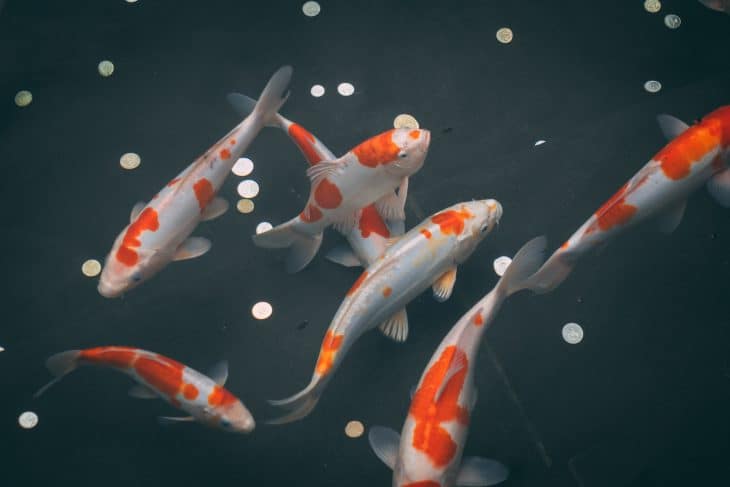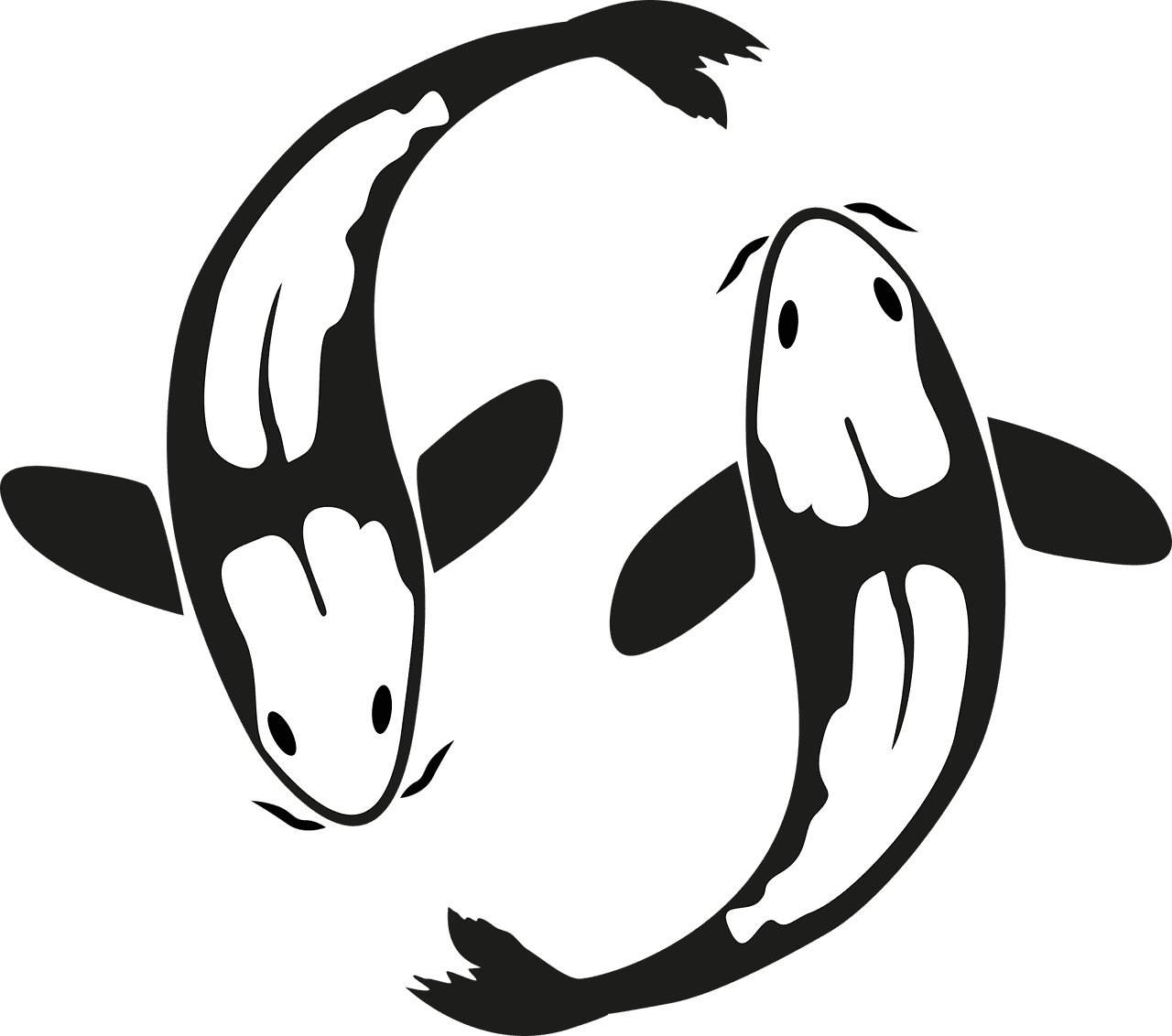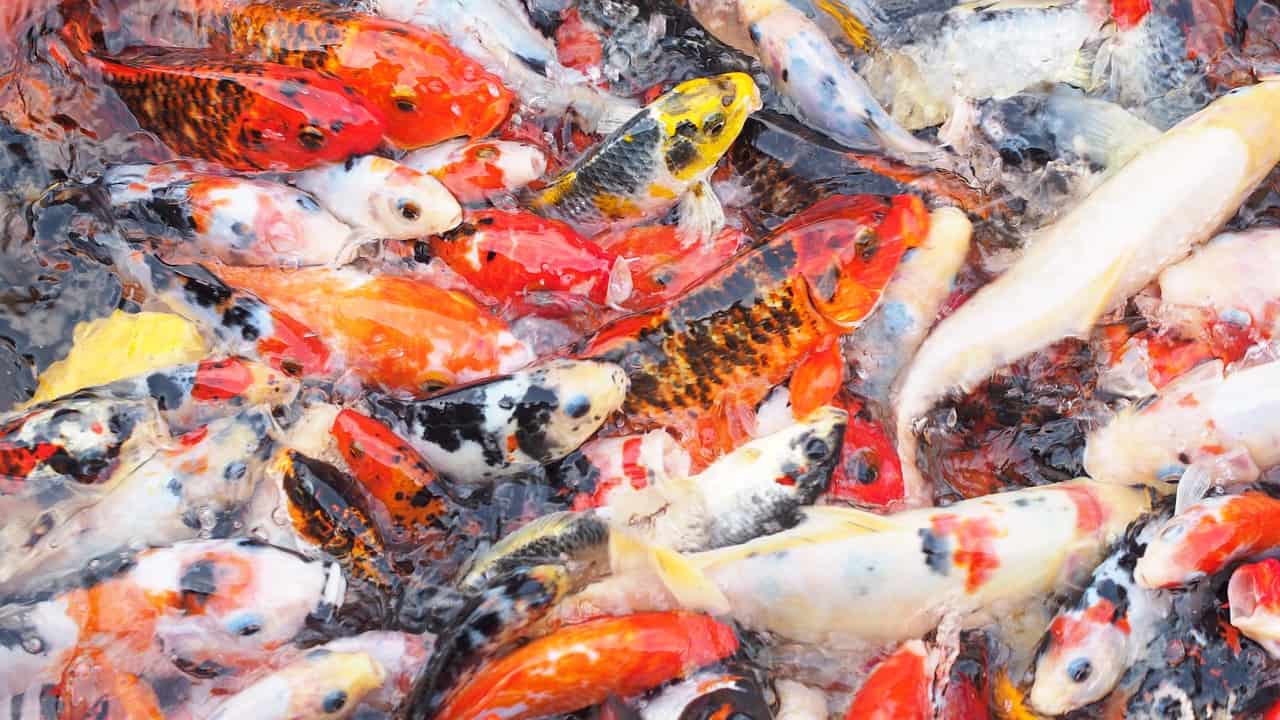
Koi fish is a variety of common carp, known for their beautiful colors. You can frequently see them in outdoor ponds and in various water gardens. Aside from their unique physical appearance, they are also notable for their loyalty to their owners, their good memory, and their high intelligence. Koi fish also play an important role in Japanese and Chinese culture. Wow! Don’t those Koi fish facts alone make you want to know more about them?
Koi fish are so important to the Japanese and Chinese people they have a long history of keeping them in their home. They believe it brings them good luck. Whether you have a Koi fish pond in your backyard or a Koi fish drawing on your wall, Koi fish are powerful symbols to use to attract abundance and prosperity. This is because fish is a water element, and in Chinese belief, water symbolizes wealth and prosperity.
Most Chinese and Japanese folk place the Koi fish drawing in the southeast portion of their home to increase their wealth. If they need a career boost, they will place the caricature in the northern section of their home. When they need positive energy in their home, Chinese and Japanese men and women add a Koi drawing to a place with bad vibes. The fish will then energize the area with strong positive energy.
If you’re not the spiritual type, you can still benefit from Koi fish in another way. Koi fish have been known to bring serenity and reduce stress into one’s home. Plus they are one of the lowest maintenance pets to own. Some people build Koi fish ponds in their backyard for precisely this reason.
Find out more about these beautiful fish in our cool and amazing koi fish facts collection below.
- Koi fish originated in China as early as the 4th century.
- An average koi can grow from 24 to 36 inches (60-91 cm) in length.
- There are more than 100 varieties of koi fish.
- An average koi fish weighs approximately 35 lbs (15 kg).
- Ghost Koi, a variety of koi, came around in the 1980s.
- Koi or Nishikigoi literally means “brocaded carp” (woven fabric).
- Koi fish are known as “swimming or living jewel.”
- Koi has different colors like black, red, orange, white, yellow, blue, and cream.
- It is a type of Amur carp or a family of freshwater fish.
- The koi’s offspring are known as koi fry.
- Koi also serve as decorative in outdoor ponds.
- A group of koi is called gasp.
- The scientific name of koi is Cyprinus rubrofuscus.
- Koi have prominent barbells (whisker-like organ) in their lips.
- They also symbolize different Asian values and virtues.
- Even underwater, koi fish also get sunburn.
- Koi fish are intelligent, they can recognize their owners who regularly feed them.
- Customarily, the Japanese pass koi fish from one generation to another as a family heirloom.
- As opposed to the famous myth, koi do not grow depending on the tank size, they continue to grow until they reach their maturity.
- The brilliant color of koi fish attracts the predators like cats, raccoons, and birds of prey.
The domestication of koi fish started as early as the 19th century.
It is believed that koi originated in China. After the Chinese introduced carp fish in Japan, the Japanese began to breed common carp as a food source initially. This marked the beginning of Koi fish domestication.
Butterfly Koi is notable for their long set of fins.
Butterfly Koi originated in mid-20th century Japan. The Japanese breeders crossbred traditional koi to a wild Indonesian longfin river carp. Butterfly Koi can grow around 40 inches (101 cm), it has an oval shape and the body is slender than the original koi. It has long, flowing fins, long barbells, and a hardier breed or more suited to any type of climate.
Kohaku is the first variety of koi that has two colors.
Kohaku is one of the most popular breeds of Koi fish in Japan. It is also one of the most common koi seen in aquariums or ponds. They are known for their white body and red marking, traditionally called hi. There are different varieties of Kohaku, but Tomoin and Yagozen are the only types that remain in Japan.

Karasu is one of the older types of koi fish.
Karasu, which means “crow” in Japanese, has a black body and may either have a white or orange belly. It is one of the older types of Koi fish and believed to bring good luck to the pond.
Koi fish are very sociable.
Koi is a social fish. They enjoy living in groups or pairs. They are also friendly and do not eat or fight with other species of fish when place in one aquarium. Koi, just like other pets, would sometimes come out to the surface if it’s feeding time or to seek a touch or pat on their head from their owners.
Koi fish may live for more than 50 years.
The lifespan of Koi fish depends on their environment and genetics. In the wild, a koi fish may live for approximately 30 to 40 years, while in captivity they may live for around 70 years. Some factors like quality food, and pond filters affect their lifespan.
Hanako was the oldest koi fish.
Reportedly, the red Higoi Koi Hanako was the oldest Koi fish ever recorded. Hanako was born in 1751 in Japan. She died because of old age in 1977 at the age of 226. She spent most of her time in a pond near a small valley in Mt. Ontake in Japan.
Koi fish are omnivorous.
In the wild, koi fish eat bugs, algae, plant and animal matter, and any piece of food that will float in their way. Meanwhile, in captivity, they consume koi food, vegetables, krill (small shrimp), and plankton, cereal, and dead leaves.

Koi fish have teeth.
Contrary to what most people believe, Koi fish have a row of teeth at the back of their throat. This is referred to as “pharyngeal teeth.” Pharyngeal teeth are common to other freshwater fish. They use their teeth to grind food like shells and insects they find at the bottom of the pond.
The most expensive koi fish cost $1.8 million.
The bidding took place in the city of Hiroshima, Japan. A collector from Taiwan bought the female Koi named “S Legend” for $1.8 million. This made it the most expensive fish. It is a red and white koi fish that measures 3 feet and 3 inches or 99.06 centimeters.
A male and female koi fish represents the yin-yang symbol.
Koi fish is often associated with yin-yang symbols or a relational concept in Chinese culture. The black and white tear-drop-like symbols represent two Koi fish, a male and female swimming together. They symbolize two energies that come together as one creating harmony and balance.

Koi fish have different symbols.
In Japanese culture, Koi fish symbolizes good fortune or luck, spiritual and material abundance. It is also associated with the strength of purpose and perseverance during difficulties. While, in Buddhism, Koi fish signifies courage. Whereas, in feng shui, a Chinese traditional practice, the spirit of Koi may attract good luck, spiritual benefits, and fortune.
Koi fish go on a type of hibernation.
Normally, during winter or if the water temperature is below 10ºC or 50ºF, Koi fish will go into a type of hibernation called torpor. It is a short-term kind of hibernation, and usually lasts for several hours to weeks. During this time, their metabolism and protein synthesis is slow. They eat less and they huddle together for them to keep warm.
An ancient Japanese and Chinese myth tells how a koi fish turned into a dragon.
An ancient Japanese and Chinese myth tells how a Koi fish became a dragon. In the story, a group of Koi swam in the Yellow River located in China. They gained strength as they swam against the current of the sea. However, when they reached the end of the river, several Koi fish turned back and just let the flow of the river carried them.
The remaining Koi continued to swim. They tried to reach the top of the waterfall. These Koi fish kept trying for 100 years. Finally, one Koi leaped and reached the top of the waterfall. The gods recognized the Koi for its perseverance and turned it into a dragon.
Ghost Koi is of British origins.
Unlike other koi types, Ghost Koi originated in Britain. Ghost Koi is a crossbreed between a mirror carp, a type of fish common in Europe, and a metallic Ogon Koi. The name Ghost Koi comes from their ghostly appearance when they swim, their metallic scales make them apparently disappear when they are underwater.
Koi eat their eggs and young.
Generally, it is possible for Koi fish to eat their eggs and offspring or fry. However, it is not because Koi fish are aggressive or because they can attack other fish. It is because they sometimes mistakenly see their eggs and young as insects.
Koi tattoos are very popular.
Gold or a combination of orange, silver, and black are some of the most colors used in choosing a koi tattoo design. It is commonly placed with other Asian symbols like lotus flowers, or other Chinese characters. Why are they so popular? It is believed that a koi tattoo symbolizes strength, a person that has it can overcome any struggle.
A crowded pond will make the koi fish unhealthy.
Koi fish do not require a lot of maintenance. One important thing that owners need to observe is that the pond should not be overpopulated to ensure that Koi fish will remain healthy. Though plants are good for the pond, it is also important that there aren’t too many plants covering the surface of the pond. There should be at least a ratio of 40 to 50 percent plants to water. Too many plants may prevent sunlight from getting into the water and may affect oxygen levels.

Marble betta or koi betta has blotches all over their body.
Koi betta or also marble betta is a type of koi that has blotches or spots in the body. They have special genes called “jumping genes” or “transposons.” This is a genetic trait that causes their color to change throughout their lives.
A combination of 8 red and 1 black koi fish is "lucky."
In feng shui practices, 8 is a prosperous number. A combination of 8 red and 1 black koi fish symbolizes prosperity, good fortune, and energy. At the same time, paintings of a koi pond with colorful koi fishes are also popular feng shui artwork and are said to bring good luck. Display these paintings on the east, southeast, or north walls of your home for maximum effect.
Was this page helpful?
Our commitment to delivering trustworthy and engaging content is at the heart of what we do. Each fact on our site is contributed by real users like you, bringing a wealth of diverse insights and information. To ensure the highest standards of accuracy and reliability, our dedicated editors meticulously review each submission. This process guarantees that the facts we share are not only fascinating but also credible. Trust in our commitment to quality and authenticity as you explore and learn with us.
